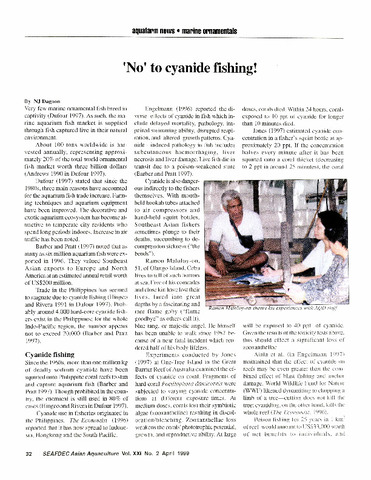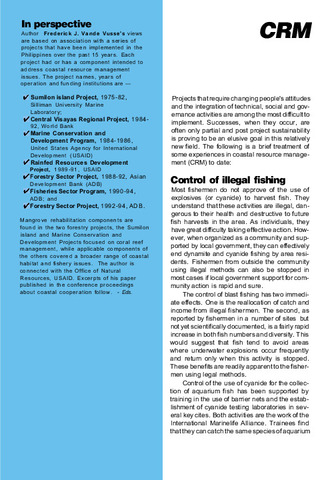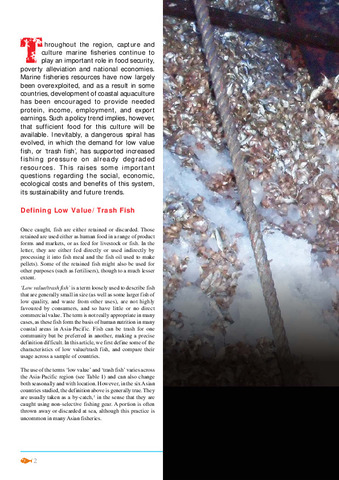| dc.contributor.author | Estudillo-del Castillo, Chona | |
| dc.contributor.author | Gapasin, Rolando S. | |
| dc.contributor.author | Leaño, Eduardo M. | |
| dc.date.accessioned | 2014-05-23T08:15:56Z | |
| dc.date.available | 2014-05-23T08:15:56Z | |
| dc.date.issued | 2009 | |
| dc.identifier.citation | Estudillo-del Castillo, C., Gapasin, R. S., & Leaño, E. M. (2009). Enrichment potential of HUFA-rich thraustochytrid Schizochytrium mangrovei for the rotifer Brachionus plicatilis. Aquaculture, 293(1-2), 57-61. | en |
| dc.identifier.issn | 0044-8486 | |
| dc.identifier.uri | http://hdl.handle.net/10862/2089 | |
| dc.description.abstract | An enrichment experiment was performed to evaluate the changes in lipid and essential fatty acid contents of the rotifer Brachionus plicatilis fed with freeze-dried cells of tropical thraustochytrid Schizochytrium mangrovei (Isolate IAo-1). Rotifers starved for 24 h were fed with S. mangrovei cells at 200, 300, 400, 500, 600 and 700 mg L−1. Enrichment was carried out at two periods (Short-term = 5 h; Long-term = 10 h) to determine the optimum time needed for the maximum enrichment of the rotifers. There was an overall significant increase in the total lipid, arachidonic acid (AA) and docosahexaenoic acid (DHA) contents of rotifers after feeding with freeze-dried S. mangrovei indicating the successful uptake of these nutrients in the rotifer's biochemical composition. On the other hand, docosapentaenoic acid (DPA) did not change significantly in enriched rotifers. Results of the present study indicate that both factors, feeding concentrations and enrichment periods, significantly affected the lipid, AA and DHA contents of rotifers. Uptakes of lipid, AA and DHA significantly increased with increasing feeding concentrations except for those fed the highest feeding concentration of 700 mg L−1 for 10 h. Moreover, lipid and AA contents of enriched rotifers were significantly higher during the short-term enrichment period while DHA contents were significantly higher during the long-term enrichment period. Therefore, it is concluded that the feeding concentration of 700 mg L−1 at an enrichment period of 5 h is optimum in the AA and DHA enrichment of rotifers. The strategic scheme of combining the proper amount of enrichment product and the duration of enrichment in boosting the DHA contents of rotifers will effectively ensure a reliable production of nutritionally superior rotifers at a minimal cost. This will ultimately contribute to the success of rearing marine fish larvae in the hatchery. | en |
| dc.description.sponsorship | The authors thank Dr. Josephine Nocillado for her critical review of the manuscript. This study is funded by SEAFDEC/AQD under the Study Code: NR-05-F99T. | en |
| dc.language.iso | en | en |
| dc.publisher | Elsevier | en |
| dc.subject | Brachionus plicatilis | en |
| dc.subject | Rotifera | en |
| dc.title | Enrichment potential of HUFA-rich thraustochytrid Schizochytrium mangrovei for the rotifer Brachionus plicatilis | en |
| dc.type | Article | en |
| dc.citation.volume | 293 | |
| dc.citation.issue | 1-2 | |
| dc.citation.spage | 57 | |
| dc.citation.epage | 61 | |
| dc.citation.journalTitle | Aquaculture | en |
| dc.subject.asfa | aquaculture | en |
| dc.subject.asfa | arachidonic acid | en |
| dc.subject.asfa | biochemical composition | en |
| dc.subject.asfa | fatty acids | en |
| dc.subject.asfa | fish culture | en |
| dc.subject.asfa | fish larvae | en |
| dc.subject.asfa | mariculture | en |
| dc.subject.asfa | marine fish | en |
| dc.subject.asfa | marine invertebrates | en |
| dc.subject.asfa | biological uptake | en |
| dc.identifier.doi | 10.1016/j.aquaculture.2009.04.008 | |
| dc.subject.scientificName | Schizochytrium mangrovei | en |



